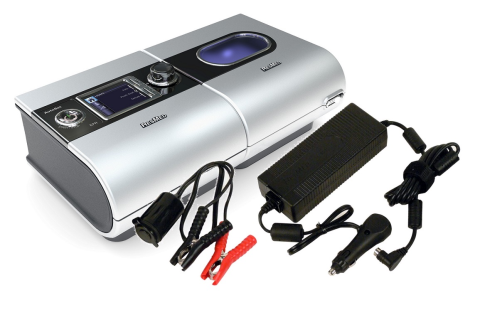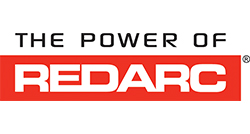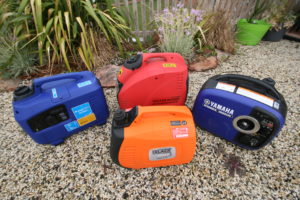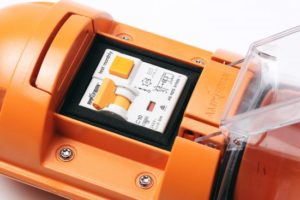Camping and Sleep Apnoea
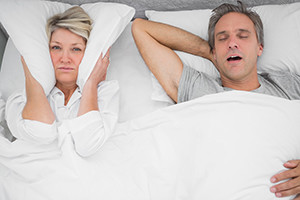 What is Sleep Apnoea
What is Sleep Apnoea
Sleep apnoea is a sleep disorder characterized by pauses in breathing or instances of shallow or infrequent breathing during sleep. Each pause in breathing, called an apnoea, can last for several seconds to several minutes, and may occur, by definition, at least 5 times in an hour. Similarly, each abnormally shallow breathing event is called a hypopnea. Sleep apnoea is classified as a dyssomnia, meaning abnormal behaviour or psychological events occur during sleep.
When breathing is paused, carbon dioxide builds up in the bloodstream. Chemoreceptors in the blood stream note the high carbon dioxide levels. The brain is signalled to wake the person sleeping and breathe in air. Breathing normally will restore oxygen levels and the person will fall asleep again.
Sleep apnoea is often diagnosed with an overnight sleep test called a polysomnogram, or "sleep study".
The condition is often identified with severe snoring. Most sufferers seek treatment for severe snoring only to find out that they have sleep apnoea.
Left untreated, sleep apnoea causes fatigue, irritability, zoning out and memory loss. A 2012 study showed that hypoxia (an inadequate supply of oxygen) that characterizes sleep apnoea promotes angiogenesis which increase vascular and tumour growth, which in turn results in a 4.8 times higher incidence of cancer mortality. It has also been linked to Epilepsy.
How is it treated?
There are several treatments for sleep apnoea and anyone found to have the condition should consult their doctor to see which one is suitable for them.
I have tried a few.
Throat spray: These are more aimed at treating snoring rather than sleep apnoea itself. It supposedly lubricates the back of the throat and the soft pallet to minimise the vibration that causes the snoring. This didn’t work for me.
Tongue Stabilising Device: A small piece of plastic that sits at your lips and resembles a large pacifier with a hole into which you can insert your tongue. When used, it can hold your tongue forward, which might 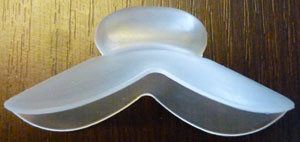 alleviate snoring or sleep apnoea that occurs with an obstructed airway. I tried one of these too. Didn’t work very well. My tongue kept falling out and the snoring would resume.
alleviate snoring or sleep apnoea that occurs with an obstructed airway. I tried one of these too. Didn’t work very well. My tongue kept falling out and the snoring would resume.
Mandibular repositioning device (MRD): Looks like a mouth guard that can hold the lower jaw in a forward position during sleep, raising the soft pallet much like the Tongue Stabiliser.
I had one of these made for me at great expense and it seemed to work. I did experience some discomfort, mainly a sore jaw and occasional headaches but the snoring was greatly reduced. Unfortunately, over time, its effectiveness reduced to the point it was virtually useless.
Continuous positive airway pressure (CPAP) therapy or a CPAP Machine:
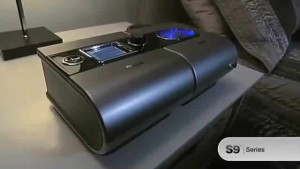 Continuous positive airway pressure is a form of positive airway pressure ventilator, which applies mild air pressure on a continuous basis to keep the airways continuously open in a patient who is unable to breathe spontaneously on his or her own.
Continuous positive airway pressure is a form of positive airway pressure ventilator, which applies mild air pressure on a continuous basis to keep the airways continuously open in a patient who is unable to breathe spontaneously on his or her own.
It consists of a small pump which may have a humidifier incorporated into it or as a separate attachment, an air hose and a delivery mask of some type, usually either a full face mask, nasal pillow mask or micro nasal mask or ‘tubes’. These are the most effective treatment for sleep apnoea.
I have one. A Resmed S9 Elite with humidifier and heated air hose. I also have a pillow nasal mask and a set of nasal tubes. This is the only solution that completely resolved my condition.
Camping with a CPAP Machine
Many times I see the question being asked about caravanning or camping with one of these CPAP machines. Well I can tell you that I did a lot of research at the time I got mine to ensure that it would not inhibit my love of camping and the outdoors.
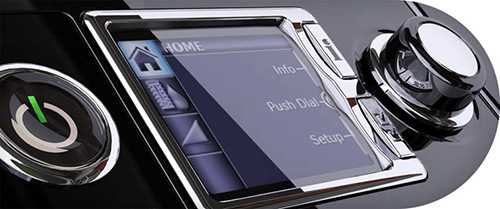 The Resmed unit was available with a 12 volt power supply so it can be run off a standard cigarette lighter socket. It is also able to be run from a pure sinewave inverter without voiding the warranty should a suitable 12 volt source not be available. The heater/humidifier can be disconnected from the unit and just run as an air pump only. This reduces the power consumption significantly allowing the unit to run from a 12v battery for extended periods.
The Resmed unit was available with a 12 volt power supply so it can be run off a standard cigarette lighter socket. It is also able to be run from a pure sinewave inverter without voiding the warranty should a suitable 12 volt source not be available. The heater/humidifier can be disconnected from the unit and just run as an air pump only. This reduces the power consumption significantly allowing the unit to run from a 12v battery for extended periods.
I am certain other brands are capable of similar operation. If you do find yourself needing to purchase a CPAP machine, don’t go buying one from the internet. Go and see a CPAP machine specialist and discuss the options available in order to ensure you get the correct machine for you and ensure it will fit in with your RV lifestyle.
Modifications to the van:
Obviously, a decent supply of power is essential if you want to use your cpap machine while caravanning. If your machine has 12v operation capability, then a 12v socket near your side of the bed is essential. If your only option is for a 240v main powered unit, then most most manufacturers will fit 240v outlet on both sides of the bed. If you want to go that step further and have 240v operation while freecamping, then you'll need a decent 12v battery supply and a suitably rated inverter. Having a 240v outlet from the inverter hard wired to your side of the bed is also a great convenience. Just ensure the inverter is a pure sinewave inverter and that, as stated earlier, the manufacturer of the CPAP machine warrants for the use off an inverter as many don't. Also, enure the cpap machine can operate without the heater/humidfier as these draw a lot of current and can severly run down your batteries in a short space of time. Most CPAP machines that run without the humidfier will draw less than 1 watt hour per hour in this mode.
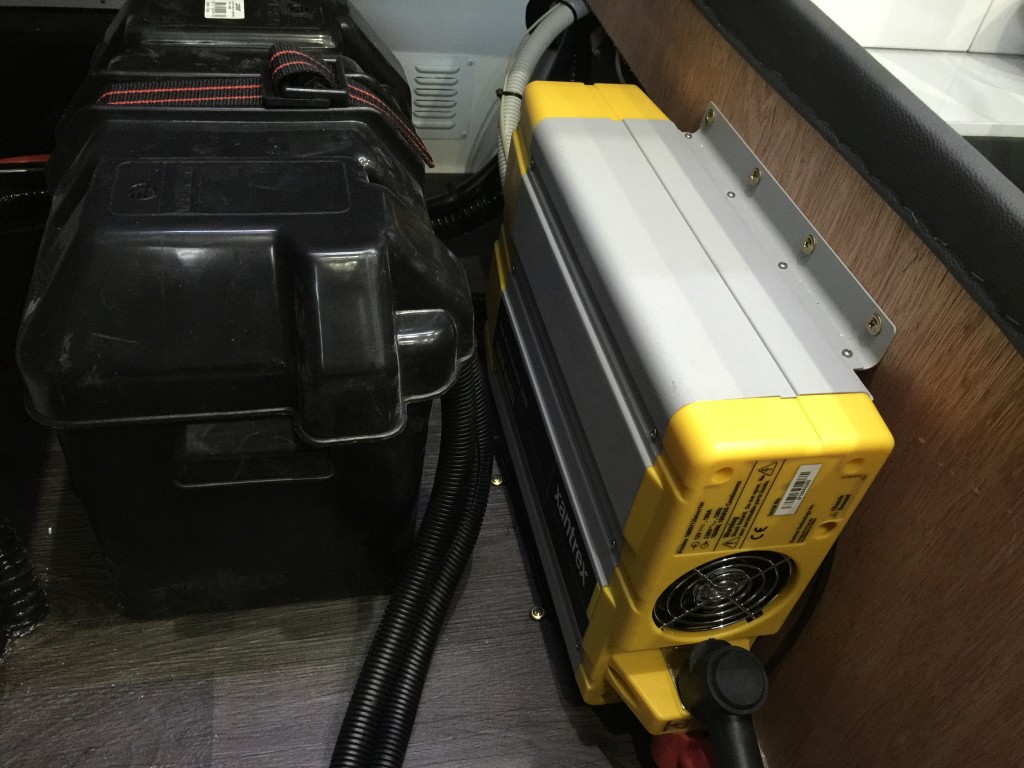
Final Hints and tips:
If you think you have sleep apnoea
- See your GP in the first instance.
- Get a referral to a sleep disorders specialist.
- Organise for a sleep study to determine the severity of your condition.
For buying a CPAP Machine
- Buy a good well-known brand name unit.
- Buy it from an Australian retailer, preferably one who can use the diagnosis from the doctor to tailor a solution to meet your medical needs.
- Buy a unit that has some form of data logging. Get this data checked by the retailer on a regular basis to ensure the system is working properly.
- Buy a unit that is warrantied for use with a pure sinewave inverter. Many are not...!
- Try to buy a unit that has a 12v power option.
- Try to buy a unit that can operate without the humidifier. This reduces power consumption considerably.
Peparing the caravan:
- Install a good quality pure sinewave inverter.
- Install outlets for mains 240v, inverter 240v and 12v near the bed.
- Install at least 200ah of AGM batteries or 150ah of Lithium.
- Install between 300 and 500 watts of solar panels.
- Always have a backup charging source for your solar such as a small generator.
- Install a good quality battery monitor.
- You can always tap into your car’s second battery for additional power.
For general use:
- Keep a box of tissues handy. Condensation can build up inside the mask on very cold nights.
- Keep a spare hose in case one gets damaged.
- Try your system out at home first to learn how your system works.
- Understand your 12v power system and know how much power you normally use.
